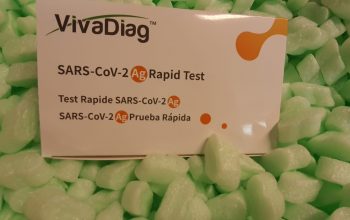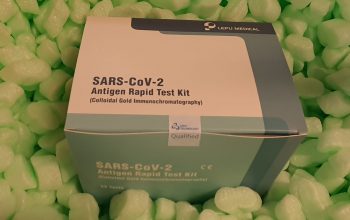Vaginal candidiasis is a particularly frequent illness predominantly attributable to 4 phylogenetically numerous species: Candida albicans; Candida glabrata; Candida parapsilosis; and Candida tropicalis. Using a time course an infection mannequin of vaginal epithelial cells and twin RNA sequencing, we present that these species exhibit distinct pathogenicity patterns, that are outlined by extremely species-specific transcriptional profiles throughout an infection of vaginal epithelial cells. In distinction, host cells exhibit a homogeneous response to all species on the early phases of an infection, which is characterised by sublethal mitochondrial signalling inducing a protective type I interferon response.
At the later phases, the transcriptional response of the host diverges in a species-dependent method. This divergence is primarily pushed by the extent of epithelial injury elicited by species-specific mechanisms, akin to secretion of the toxin candidalysin by C. albicans. Our outcomes uncover a dynamic, biphasic response of vaginal epithelial cells to Candida species, which is characterised by protective mitochondria-associated type I interferon signalling and a species-specific damage-driven response.
Mitochondria-lysosome contacts are lately recognized websites for mediating crosstalk between each organelles, however their position in regular and diseased human neurons stays unknown. In this research, we exhibit that mitochondria-lysosome contacts can dynamically kind in the soma, axons, and dendrites of human neurons, permitting for his or her bidirectional crosstalk. Parkinson’s illness affected person derived neurons harboring mutant GBA1 exhibited extended mitochondria-lysosome contacts attributable to faulty modulation of the untethering protein TBC1D15, which mediates Rab7 GTP hydrolysis for contact untethering.
This dysregulation was attributable to decreased GBA1 (β-glucocerebrosidase (GCase)) lysosomal enzyme exercise in affected person derived neurons, and could possibly be rescued by rising enzyme exercise with a GCase modulator. These defects resulted in disrupted mitochondrial distribution and perform, and could possibly be additional rescued by TBC1D15 in Parkinson’s affected person derived GBA1-linked neurons. Together, our work demonstrates a potential position of mitochondria-lysosome contacts as an upstream regulator of mitochondrial perform and dynamics in midbrain dopaminergic neurons in GBA1-linked Parkinson’s illness.
In vitro susceptibility of kinetoplastids to celastroloids from Maytenus chiapensis
Leishmaniasis and Chagas are among the many most vital uncared for tropical ailments. Due to a number of drawbacks with the present chemotherapy, creating new antikinetoplastid medication has turn into an pressing problem. In the current work, a bioassay-guided investigation of the foundation bark of Maytenus chiapensis on Leishmania amazonensis and Trypanosoma cruzi led to the identification of two D:A-friedo-nor-oleanane triterpenoids (celastroloids), 20β-hydroxy-tingenone (5) and 3-O-methyl-6-oxo-tingenol (8) as promising antikinetoplastid leads.
They displayed efficiency on L. amazonensis promastigotes (IC50s 0.44 and 1.12 μM) and intracellular amastigotes (IC50s 0.83 and 1.91 μM), and on T. cruzi epimastigotes stage (IC50 2.61 and 3.41 μM) greater than reference medication, miltefosine and benznidazole, respectively. This efficiency was coupled with a wonderful selectivity index on murine macrophages. Mechanism of motion research, together with mitochondrial membrane potential and ATP degree evaluation, revealed that celastroloids may induce apoptotic cell dying in L. amazonensis triggered by the mitochondria. In addition, the structure-activity relationship is mentioned.
These findings strongly underline the potential of celastroloids as lead compounds to develop novel antikinetoplastid medication. To evaluate carnitine’s position in migraine and headache, current a case of a affected person with intractable power migraine refractory to medicines however exquisitely attentive to mitochondrial cofactors with a significantly immediate response to L-carnitine supplementation with dose response, and counsel eventualities the place L-carnitine could possibly be thought of for prophylactic remedy in migraine and intractable headache with migraine options.
Cooperation between organelles is important to take care of the traditional operation of the cell. A lipid droplet (LD), a dynamic organelle, is specialised in lipid storage and can work together bodily with mitochondria in a number of cell varieties. However, an applicable methodology for in situ finding out the interplay relationships of mitochondria-LDs continues to be missing. Herein, a charge-dependent technique is proposed for the primary time by contemplating adequately the cost distinction between mitochondria and LDs. According to the novel technique, we’ve developed a distinctive fluorescent probe Mito-LD primarily based on the cyclization and ring-opening conversion.

Mdivi-1 alleviates mind injury and synaptic dysfunction after intracerebral hemorrhage in mice
As a selective inhibitor of mitochondrial fission protein dynamin-related protein-1 (Drp1), mitochondrial division inhibitor 1 (mdivi-1) can cross the blood-brain barrier (BBB) and exert neuroprotection. However, it stays unclear whether or not mdivi-1 can attenuate intracerebral hemorrhage (ICH)-induced secondary mind damage. This research was undertaken to characterize the roles of mdivi-1 in short-term and long-term behavioral outcomes, together with synaptic plasticity adjustments in mice after ICH. The outcomes indicated mdivi-1 reversed Drp1 translocation and the morphologic adjustments of mitochondria, in addition to ameliorated short-term neurobehavioral deficits, the BBB disruption and mind edema remarkably.
[Linking template=”default” type=”products” search=”Monkey Testis Mitochondrial Protein” header=”2″ limit=”1588″ start=”3″ showCatalogNumber=”true” showSize=”true” showSupplier=”true” showPrice=”true” showDescription=”true” showAdditionalInformation=”true” showImage=”true” showSchemaMarkup=”true” imageWidth=”” imageHeight=””]
In addition, mdivi-1 may rescue ICH-induced motor and reminiscence dysfunctions. Mdivi-1 may additionally forestall ICH-induced reductions in synaptic proteins (synapsin I, PSD95) and phosphorylated cAMP-response component binding (p-CREB). In vitro, mdivi-1 inhibited hemin-induced hippocampal neuron dying and improved neurite outgrowth. In conclusion, we discovered that mdivi-1 can alleviate short-term and long-term neurological deficits, synaptic dysfunction. These findings exhibit that mdivi-1 could also be helpful in the remedy of secondary mind damage, synaptic dysfunction and neurological outcomes attributable to ICH.




